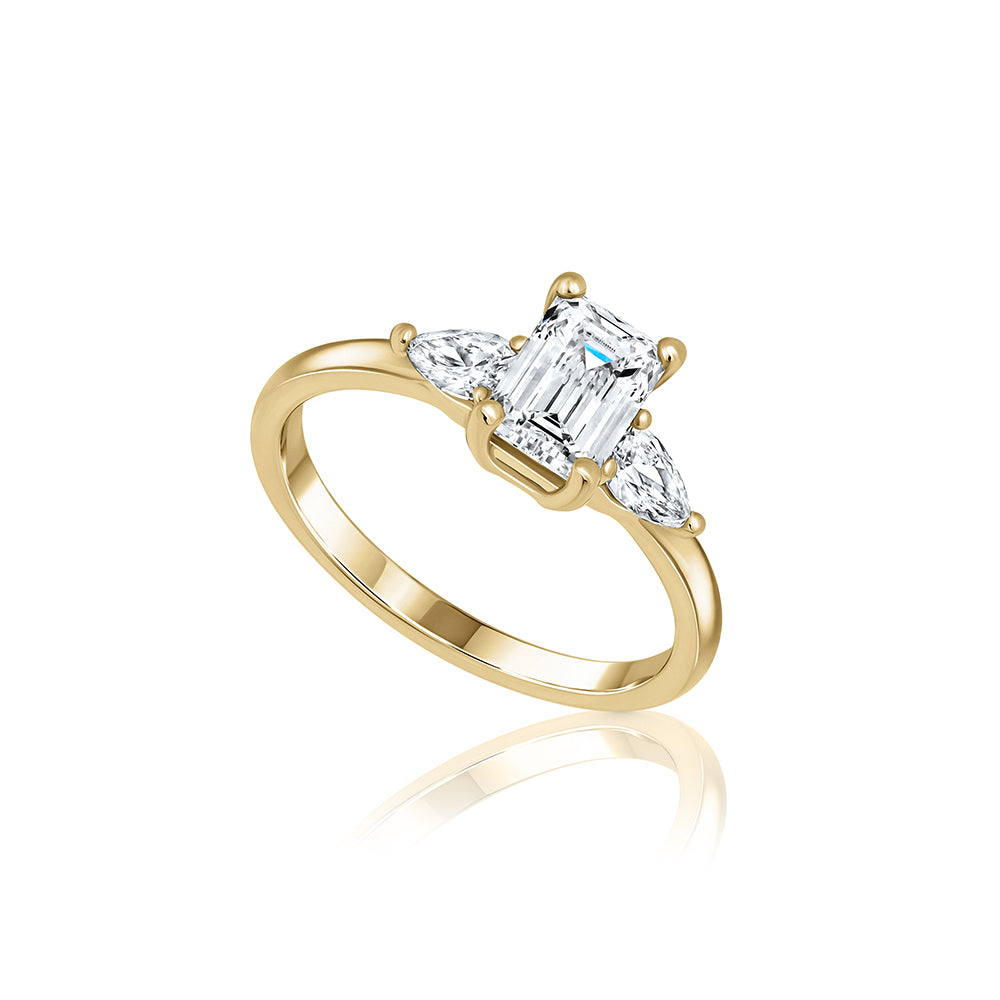Sapphire – the perfect blue gemstone
Gazing into the depths of the blue sapphire, no other gemstone offers such a stunning, saturated, and rich color as sapphire. It is a unique color! Just like everything else related to sapphire.
More and more women are choosing sapphire as the gemstone to adorn their engagement ring. The blue sapphire gives the engagement ring a unique look with both elegance and beauty.
Whether you are looking for a blue engagement ring or other blue-set jewelry, sapphire is the perfect choice for you.
How did it start?
In the Wild West of 1865, gold prospectors scattered along the banks of the Missouri River and ‘swept’ what were called ‘Montana fancy sapphires.’ Many prospectors were frustrated when they could only find these pale gems, but when it was realized that heat treatment revealed the gems’ rich blue, both the beauty and value of sapphires became apparent.
From here, the road to royalty was short and meteoric. Sapphires quickly became a favorite of the upper echelons of British royalty and the wealthy of America.
Sapphire is considered a symbol of purity, loyalty, and royalty, and it also represents honesty and nobility. The rich, deep blue of the sapphire gave the stone properties of warding off the 'evil eye' and preserving good luck.
Qualities that characterize sapphires
Most people think of sapphire as the iconic blue sapphire found in many luxury jewels. But the truth is that sapphires can come in a variety of colors and saturation levels – from pale to very deep. Blue stones may be the most common type, but there are also salmon-colored sapphires called Padparadscha – a Sinhalese word (spoken in Sri Lanka) meaning ‘lotus flower’.
There is a difference between a 'natural' sapphire and an 'untreated' sapphire:
- Natural sapphire – not created in a lab. It developed naturally, in the ground. These stones are considered the most expensive sapphires on the market.
- 'Treated' sapphire – refers to the sapphire being exposed to heat or chemical processes intended to enhance its color.
Sapphire treatment involves the introduction of agents or other materials into the stone. These ingredients, which are intended to fill cracks and inclusions, are usually colored. Therefore, when they are embedded within the stone, the natural and original character of the sapphire is lost.
Keep this in mind when buying sapphire jewelry. If it doesn't matter to you, it will certainly save you some money.
Jewelry set with sapphires
You can find a selection of designer luxury jewelry that combines blue sapphires in earrings, diamond necklaces , or diamond rings , in a way that offers a unique and special piece of jewelry. For example:
-
Gold dangling earrings with sapphires and diamonds
-

Indian style gold earrings studded with sapphires
Gold earrings -

- Gold rings
-
Gold ring set with a diamond and a trillion-cut sapphire – a sapphire ring offers a charming, delicate and precise combination of a gold ring set with a clear blue sapphire and a sparkling white diamond.

-
Gold ring set with a diamond and a trillion-cut sapphire – a sapphire ring offers a charming, delicate and precise combination of a gold ring set with a clear blue sapphire and a sparkling white diamond.
Parameters for grading blue sapphires
Once you have decided to buy a piece of jewelry set with blue sapphires, whether it is a sapphire ring or necklaces with sapphire stones, it is important to know that each stone is unique and different, and there are 4 main parameters that need to be examined to judge the blue sapphire:
- Color – The main factor in the value of a sapphire’s color is the degree of saturation of the stone’s hue. In other words, how pure or intense the color appears. When it comes to sapphires, the more saturated the color, the better.
- Clarity – Most sapphires come with a few inclusions (flaws). A sapphire without inclusions should raise suspicion that it may be a synthetic stone. Look for a sapphire without inclusions that are visible to the naked eye. The clarity of a sapphire is measured by the number of inclusions, their size, and their location. The less visible the inclusions, the higher the grade of the stone.
- Cut – The cut is what makes a sapphire sparkle. The cut of the stone refers to the way the rough stone is polished. The cut also affects, among other things, the symmetry and brilliance of the sapphire.
- Carat – Like gold, the weight of sapphire is measured in carats. Larger gems are rarer and therefore more valued.
Sapphire Stone Care
Caring for sapphires is simple because it is a fairly hard stone.
- To clean the sapphire, use a mild detergent diluted in lukewarm water and a microfiber cloth. After cleaning, gently wipe with a soft towel.
- For a deeper clean, soak the sapphire in the cleaner for up to 15 minutes, then quickly polish it.
The mythology associated with sapphires
Sapphire is the birthstone of those born in September, and is considered to be associated with the planet Saturn.
Sapphires were valued as great gemstones as early as 800 BC. The rulers of ancient Persia believed that the sky got its blue color from the reflection of sapphires. The color of these stones was described in one of the ancient poems: "The blue of the clear sky a few minutes after sunset."
Blue sapphires were used as sacred stones by both the ancient Persians and the Catholic Church, in the belief that these stones turned the sky blue due to their reflection.
The mythological stories associated with sapphires are perhaps richer than any other gemstone, making sapphire an excellent purchase for romantics who are enthusiastic about tales of glory associated with times gone by.






